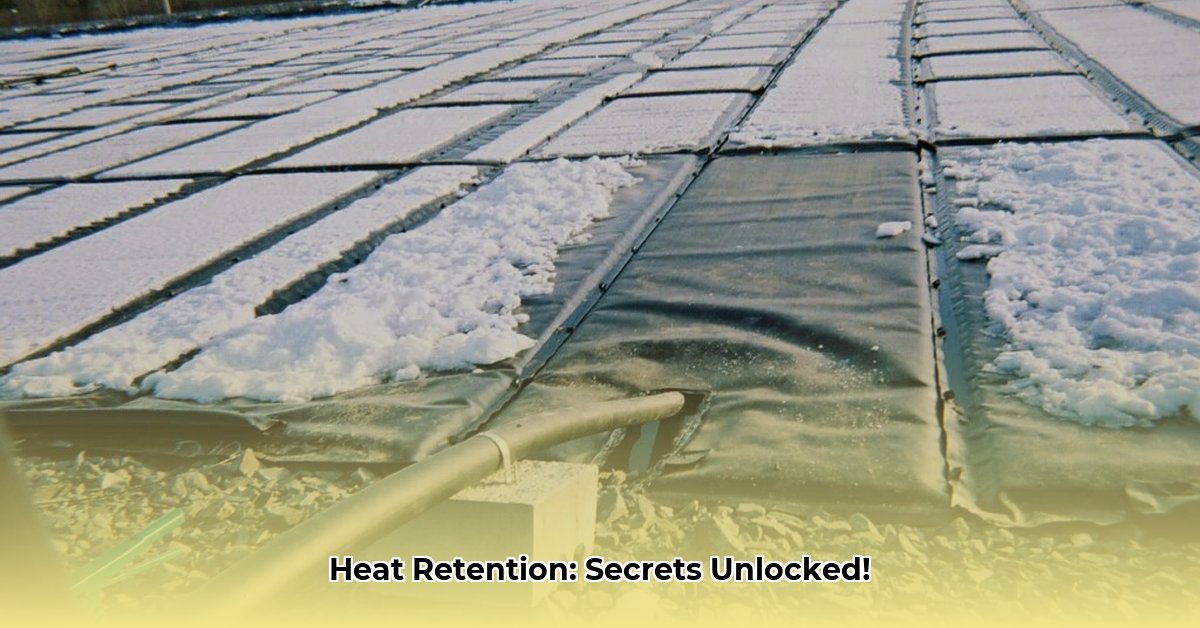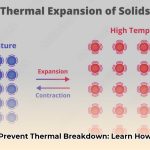Decoding Heat-Holding Champions
Ever wonder why a ceramic mug keeps your coffee hotter than a glass one? The answer lies in the fascinating world of material heat retention – the ability of a substance to hold onto heat. This isn’t just about warm beverages; it’s a fundamental scientific principle with applications ranging from everyday objects to cutting-edge technologies. This guide explores the science behind heat retention, delving into material properties, practical applications, and even some calculations.
Exploring Thermal Properties: Why Some Materials Hold Heat Better
Why do some materials excel at retaining heat while others quickly lose it? The key lies in their inherent thermal properties.
Heat Capacity and Thermal Conductivity
Imagine pouring hot cocoa into a metal mug and a ceramic one. The ceramic mug will likely stay warmer longer. This is due to differences in heat capacity – how much heat a material can absorb before its temperature changes. Ceramics have a higher heat capacity than metals, meaning they can store more heat without getting scorching hot.
Thermal conductivity, on the other hand, describes how efficiently a material transfers heat. Metals are excellent conductors, rapidly transferring heat, which is why they’re great for cookware but not for insulation. Conversely, insulating materials like ceramic act as thermal barriers, resisting heat flow and keeping your drink warm.
Specific Heat and Thermal Diffusivity
Specific heat quantifies the heat needed to raise the temperature of one unit mass of a substance by one degree. Water, with its remarkably high specific heat, can absorb significant heat without drastic temperature changes, explaining its effectiveness as a coolant.
Thermal diffusivity describes how quickly temperature changes propagate through a material. It combines thermal conductivity and heat capacity to provide a holistic understanding of a material’s thermal behavior. Metals, with high thermal diffusivity, quickly reach a uniform temperature, while materials like wood, with low diffusivity, exhibit more gradual temperature changes.
Material Spotlight: From Aerogels to Wool
Different materials bring unique heat-holding talents:
-
Aerogels: These incredibly lightweight materials boast exceptionally low thermal conductivity, making them superb insulators, particularly in applications like spacecraft insulation.
-
Fiberglass, Mineral Wool, Cellulose: More cost-effective alternatives to aerogels, offering respectable insulation for buildings.
-
Water and Phase-Change Materials (PCMs): These materials shine at storing thermal energy due to their high heat capacity. PCMs, which absorb/release heat during phase transitions (like melting/solidifying), are increasingly used for temperature regulation.
-
Ceramics: Known for their durability and high-temperature tolerance, ceramics are ideal for applications like industrial kiln linings.
-
Polymers: Highly versatile and available in various densities, polymers are adaptable for creating custom insulation solutions.
-
Composites (e.g., fiberglass-reinforced polymers): Combine excellent insulation with structural strength.
-
Wool: Traps air, a poor heat conductor, within its fibers, providing excellent insulation, particularly Icelandic wool with its extra-fluffy fibers.
-
Spandex: While not a primary insulator, spandex contributes to heat retention during physical activity by trapping a thin layer of warm air and wicking away moisture.
-
Denim and Leather: Offer some thermal protection, suitable for certain types of protective clothing.
-
Kevlar and Nomex: Designed to withstand high temperatures, crucial for professionals working in extreme heat. However, they are not optimized for long-term heat storage.
The best material for a given application depends on the specific requirements. For instance, high-performance ceramics are suitable for spacecraft re-entry, while a polymer-based solution is adequate for an insulated coffee mug.
Calculating Heat Retention: Q = mcΔT
Beyond qualitative descriptions, we can quantify heat retention using the formula:
Q = mcΔT
Where:
- Q: Heat transferred (Joules)
- m: Mass of the material (kilograms)
- c: Specific heat capacity (Joules per kilogram per degree Celsius)
- ΔT: Change in temperature (degrees Celsius)
This formula is instrumental in various applications, including designing efficient heating systems and understanding material impacts on energy consumption. Remember, real-world scenarios are complex, and ongoing research continues to refine our understanding of heat transfer.
The Science Behind Heat Retention: Conduction, Convection, and Radiation
Heat naturally travels in three ways:
-
Conduction: Heat transfer through direct contact, like a spoon heating up in hot tea.
-
Convection: Heat transfer through the movement of fluids (liquids or gases), like a radiator warming a room.
-
Radiation: Heat transfer through electromagnetic waves, like the sun warming the Earth.
Effective heat retention minimizes these transfer methods. A thermos, for instance, uses vacuum insulation to minimize conduction, convection, and radiation, keeping your soup hot.
Practical Applications: From Buildings to Energy Storage
Heat retention plays a vital role in numerous applications:
Buildings
-
Passive Thermal Mass: Utilizing materials like brick, concrete, or stone to absorb and release heat naturally.
-
Active Thermal Mass: Integrating thermal mass with heating/cooling systems, such as underfloor heating or Trombe walls.
-
Phase Change Materials (PCMs): Incorporating materials that absorb/release heat during phase transitions to regulate temperature.
-
Water Tanks: Leveraging water’s high thermal mass for heating and cooling.
-
Underground Thermal Energy Storage (UTES): Storing heat (or coolness) seasonally in underground reservoirs.
Energy Storage
Concentrated solar power plants use molten salt to store thermal energy, enabling electricity generation even after sunset.
Choosing the Right Material and Design Considerations
Selecting materials for thermal mass involves considering:
- Specific Heat: Higher values indicate greater heat storage capacity.
- Thermal Conductivity: Lower values are preferable for insulation.
- Climate: Local climate influences the optimal type and amount of thermal mass.
- Building Orientation: Positioning relative to the sun affects thermal performance.
Ongoing research continually pushes the boundaries of thermal management, exploring advanced materials like nanocomposites and graphene with exceptional thermal characteristics. As our understanding evolves, we can expect even more innovative and efficient solutions for harnessing the power of heat retention.
- Vertical Axis Wind Turbine Design: Improving Efficiency and Overcoming Limits - October 29, 2025
- Wind Turbine to Power Home: Nacelle Design Improvements Advance - October 26, 2025
- Wind Turbine Blade Length: How Long Is Too Long? - October 24, 2025
















